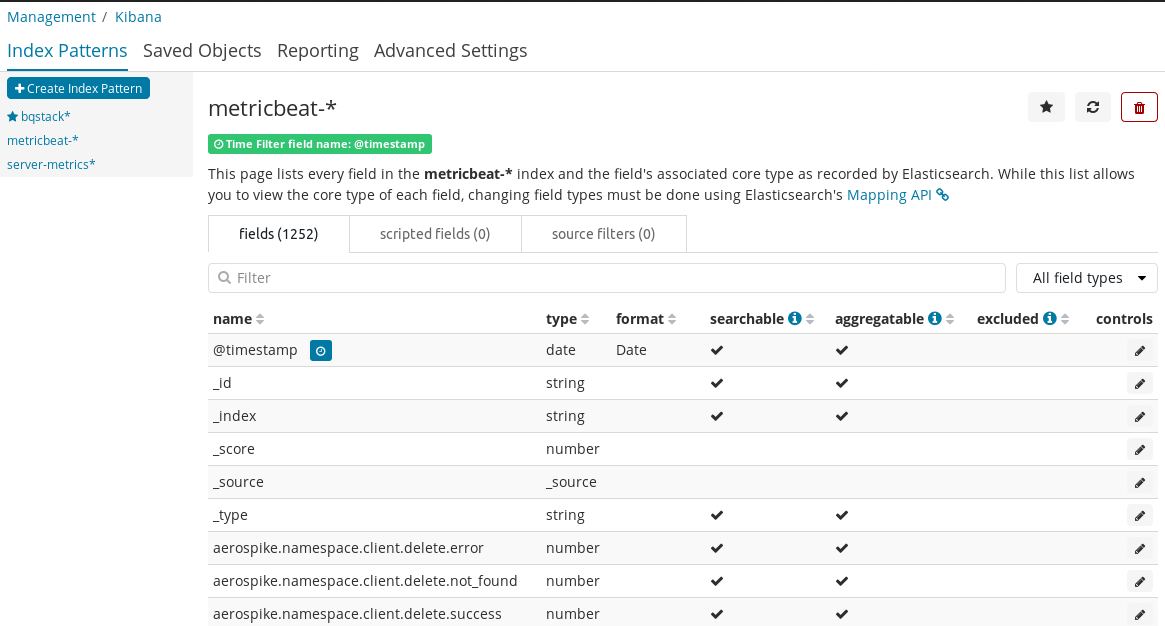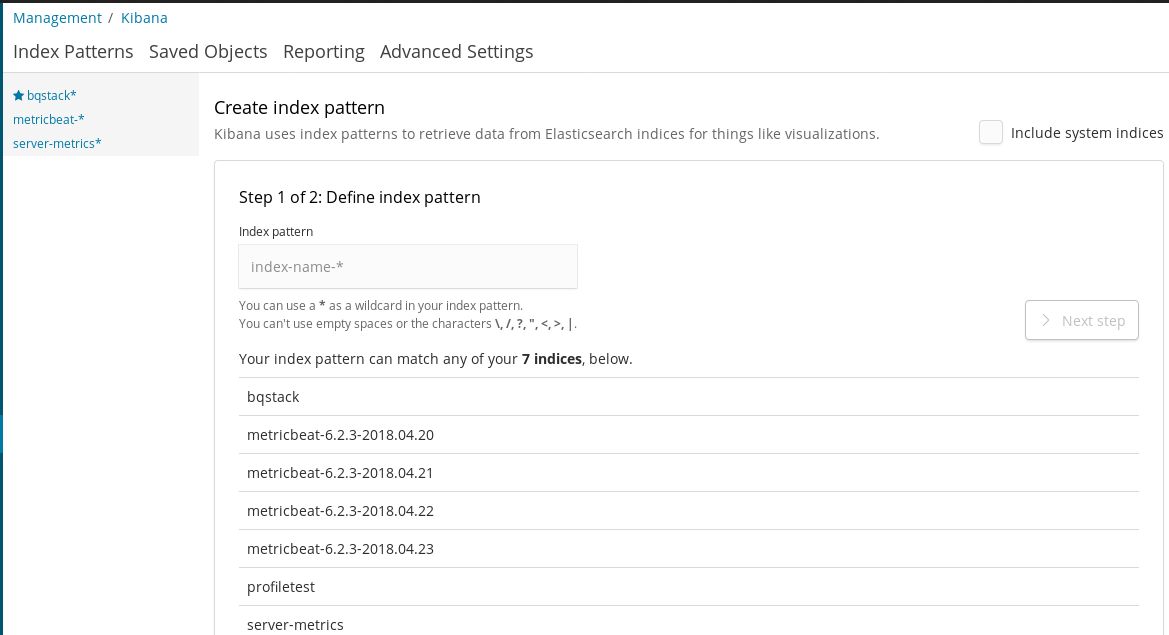To add the Elasticsearch index to Kibana, we need to configure the index pattern. This is the first step to work with Elasticsearch data.
To create a new index pattern, we need to do the following:
- Click on the
Managementlink on the left menu. - Click on the
Index Patternslink on theManagementpage. This will open the following screen:

The preceding screenshot shows us the metricbeat index pattern fields, their data types, and additional details, as this index pattern was already created.
- Now, click on the
Create index patternbutton in the top-left to create a new index pattern. This will open the following screen:

The preceding screenshot shows step 1 of 2 for index creating an pattern.
- On this screen, we need to provide the keyword for index name in the search box. Below the search box, it shows different Elasticsearch index names.
- Now if you want to add the
server-metricsindex of Elasticsearch, you need to add this name in the search box, which will...



